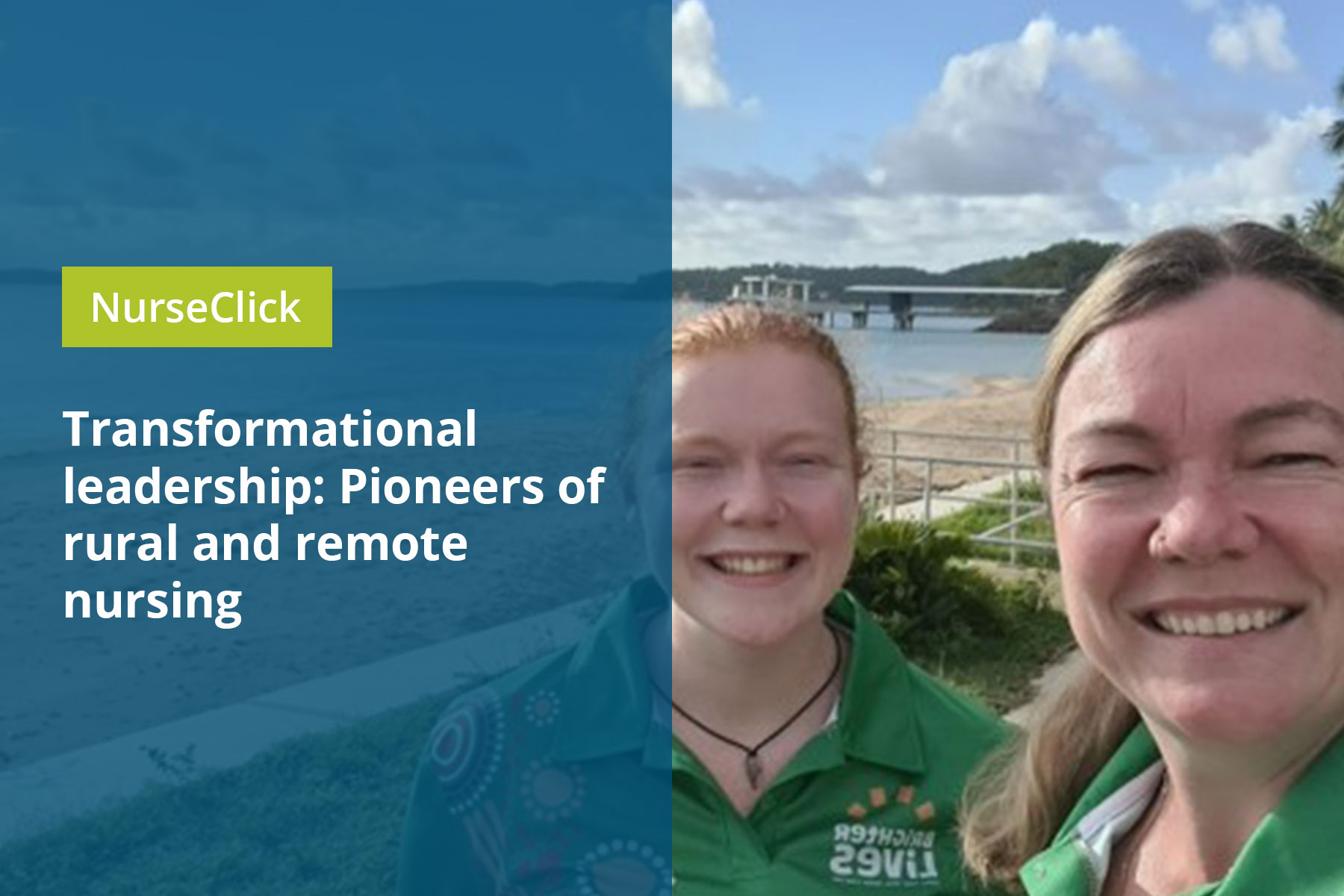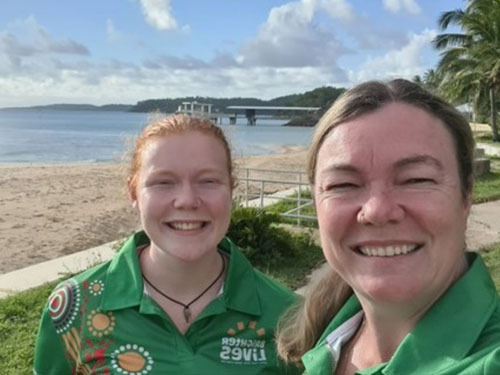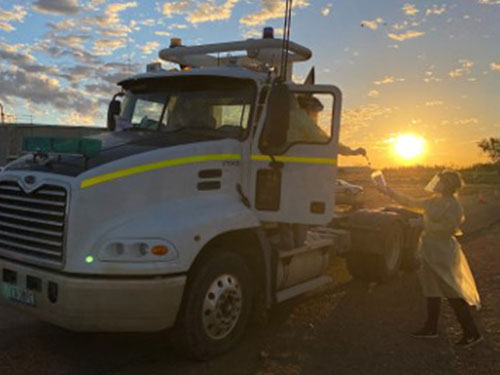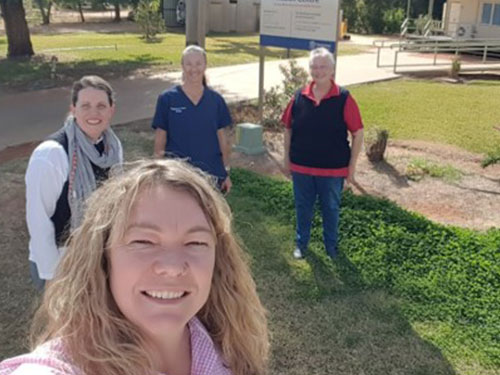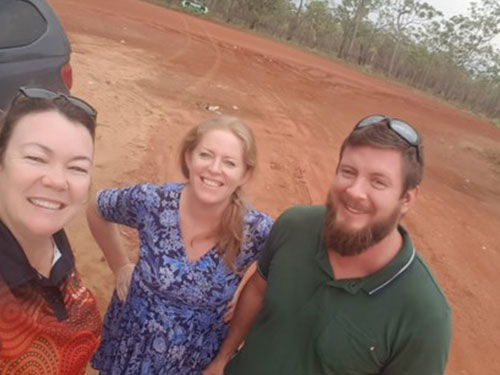Transformational leadership in its ideal form, creates valuable and positive change in the followers with the end goal of developing followers into leaders. The term ‘transformational leadership’ was originally termed in 1985 by Bernard M. Bass. This concept work extended by Burns (1978) to define transformational leadership as an approach that causes change in individuals and social systems. Transformational leaders in rural and remote nursing aim to sustain the greater good, rather than their own interests, and supportive environments where responsibility is shared.
In this article:
Perceptions and misconceptions of remote and rural areas
Rural and remote people are seen as cowboys, missionaries, mercenaries or misfits. Rural and remote nursing is a superpower! Working across geographically unique country, rural and remote nurses face a number of challenges. Often community expectations include nurses that are highly skilled, well prepared for a wide range of unscheduled situations (Kidd, 2012). Navigating these expectations requires nurses to be strong advocates for their ongoing professional development and context-specific education.
Sometimes leadership is thrust upon you as part of your title. And sometimes it’s not comfortable. You can teach someone to be a manager, but you can’t teach someone to be a leader.
Who are the less well-known pioneers of nursing in rural and remote areas?
There are well-known stories but what about the less familiar pioneers? Almost all nurses have heard of Florence Nightingale, and perhaps the story of Lieutenant Colonel Vivian Bullwinkel, AO, MBE, ARRC, ED, FNM, FRCNA, but what do you know of the pioneers of rural and remote nursing in Australia?
Nurse leaders are often forgotten. If we consider the Queensland perspective for a moment, Queensland Health was founded in 1859. On 1 January 1946, Queensland became the first state in Australia to introduce free universal public hospital treatment. But who was the first nurse employed by Queensland Health?
Male nurses were not entered in the Nurses Registers and were responsible to the Medical Superintendent as Attendants or Wardsmen. They also received higher wages than female nurses. Henry Henshaw completed his training in December 1905 and was awarded Coast Hospital Certificate No 79. So, who was the first male nurse? Or what about the first male midwife?
Some of the pioneers
Martha Entwistle
Martha Entwistle was Australia’s first convict mental health nurse. She was the earliest recorded convict nurse who worked within the Castle Hill Asylum.
Chas G Willman
Chas G. Willman in 1888 is recorded as one of the first male nurses who was appointed chief wardsman and clerk.
Rae Knox
Rae Knox (nee Seamark) trained at Atherton hospital in 1930 as an 18-year-old. She was a highly skilled nurse in her own right and nursed across many areas of remote north Queensland. She was said to have nursed under fire from snipers in Borneo. But let’s just think for a moment, Rae was reportedly born on 20 May 1912 on the verandah of Nurse McKeowen’s house at Dingo Pocket on the Atherton Tableland in North Queensland. It is notable that the verandah was screened to keep marauding dingos out. But who was Nurse McKeowen?
Annie Myria Harlow
Annie Myria Harlow was a pioneer midwife of Blackall and the surrounding district in far western Queensland in the 1900s. Annie delivered her own twins with the help of her husband who cleared a spot on top of a load of wool in the wool shed. Annie wasn’t a trained midwife, however she was known to mount a horse and trot off to help women in the area deliver their babies safely. Known as Granny Harlow, she once rode side saddle with flood water up to the girth of the saddle to a station to support a woman in labour.
Sally Goold
Sally Goold was a pioneer for Indigenous nursing in Australia. She was one of the first Indigenous nursing students in New South Wales and later one of the first Indigenous nurses in Australia. An inspiration to many other Indigenous nurses.
Elizabeth Kenny
Elizabeth Kenny was a pioneer in the time of polio and known for her work in the 1930s and 1940s. Elizabeth received no formal training as a nurse. She started her career by volunteering her services to anyone who called her for help, riding on horseback from her family home on the Darling Downs in Queensland. She furthered her experience serving as a nurse during World War One. After returning home to Australia, she worked with a Toowoomba surgeon to controversially treat cases of polio with hot baths, heat packs, massage and limb movement, instead of the immobilisation methods used by doctors at the time. Many of her patients experienced a healthy recovery. The first two polio treatment centres established by Elizabeth were funded by the Queensland Government and located in Townsville and Brisbane and attracted overseas patients.
How to help those most in need?
On Ash Wednesday 1904, the Mother’s Union of the Anglican Church at Milton conducted a mission to assist poor, sick and needy parishioners. The members of the Mother’s Union decided to make up ‘Maternity Packs’ to assist in confinement, as most children were born at home. However, most people did not know what to do with a maternity pack! It was then decided to employ a nurse on a six-month trial basis, to show women how to use the packs. Thus began the first domiciliary nursing service in Queensland.
So many incredible stories of incredible nurses and midwives, just doing their thing – every day.
I don’t claim to be a pioneer of nursing. I have worked for a mere 20 years mostly in rural and remote health care. I love rural and remote nursing because it allows autonomy and working at the top of my scope and challenges me to continue to extend my practice. Personally, for me, it is all about the community – the community of consumers but also the community of remote staff you work so closely with each day.
I have been in many meetings discussing health strategy and policy and I thought where is the voice of the nurse and where is the voice of rural and remote nurses? I came home and told my husband – I’m going to start a podcast. I had no idea about starting a podcast, but I knew I wanted to raise the profile of rural and remote nursing and perhaps along the way spark interest in the workforce and entice others to try rural and remote nursing. It was never about me. It was about you; it was about us. From humble beginnings, in my daughter’s bedroom draped in crochet blankets to dampen the echo, the A Nurse Out Where podcast was born.
Who are the rural and remote nurse leaders of today? Any nurse working in the rural and remote setting. A study by Hegney & McCarthy (2000) highlighted nurses and midwives working in smaller rural and/or remote facilities with fewer beds report the highest level of job satisfaction. They claim, “Rural nurses place particular emphasis on the satisfaction they derive from interdisciplinary and community interaction and respect” (Hegney & McCarthy, 2000). Sharing the stories of nursing and midwifery experience on my podcast A Nurse Out Where has reaffirmed this. I truly believe rural and remote nurses and midwives are the transformational pioneers of today.
This article was originally published in the Winter 2023 edition of ACN’s quarterly member publication The Hive. Members can access all past editions of The Hive on MyACN. Non-members can get a sneak peek by viewing our open-access articles.
By Danielle Causer MACN

References
Burns, J.M. (1978). Leadership. New York: Harper and Row.
Hegney, D., & McCarthy, A. (2000). Job satisfaction and nurses in rural Australia. JONA: The Journal of Nursing Administration, 30(7/8), 347-350.
Kidd, T., Kenny, A., & Meehan-Andrews, T. (2012). The experience of general nurses in rural Australian emergency departments. Nurse Education in Practice, 12(1), 11-15.
Further reading
Bass, B. M., & Riggio, R. E. (2010). The transformational model of leadership. Leading organizations: Perspectives for a new era, 2, 76-86.
Berman, A., Frandsen, G., Snyder, S., Levett-Jones, T., Burston, A., Dwyer, T., Hales, M., Harvey, N., Moxham, L., Langtree, T., Reid-Searl, K., Rolf, F., and Stanley, D. (2020) Kozier and Erb’s Fundamentals of Nursing, Volumes 1-3, (5th ed.), Pearson Education.
Cook, M. (2013) Stories from the Archives: The Noblest Profession: Nursing in Queensland, Queensland State Archives.
Doshi, D. (2020). Improving leadership of health services in rural areas: Exploring traits and characteristics. International Journal of Healthcare Management, 13(sup1), 183-191.
Fischer, S. A. (2016). Transformational leadership in nursing: a concept analysis. Journal of advanced nursing, 72(11), 2644-2653.
Khanin, D. (2007). Contrasting Burns and Bass: Does the transactional‐transformational paradigm live up to Burns’ philosophy of transforming leadership? Journal of Leadership Studies, 1(3), 7-25.
Lauder, W., Sharkey, S., and Reel, S., (2003) The development of family health nurses and family nurse practitioners in remote and rural Australia, Reprinted from Australian Family Physician Vol. 32, No.9, September 2003.
Orukwowu, U. (2022). Nursing leadership in healthcare: the impact of effective nurse leadership on quality healthcare outcomes. IPS Interdisciplinary Journal of Social Sciences, 1(1), 1-6.
PioneersWalk-SisterElizabethKenny.pdf (townsville.qld.gov.au)
Raeburn, T., Liston C., Hickmott J., and Cleary M. (2018) Life of Martha Entwistle: Australia’s first convict mental health nurse. International Journal of Mental Health Nursing.27(1), 455-463.
Roden, J., Jarvis, L., Campbell-Crofts, S., and Whitehead, D. (2016) Australian rural, remote and urban community nurses’ health promotion role and function, Health Promotion International, 31(3), 704–714.
Townsville City Council. (n.d.). Sister Elizabeth Kenny [PDF]. Retrieved from https://www.townsville.qld.gov.au/__data/assets/pdf_file/0028/109891/PioneersWalk-SisterElizabethKenny.pdf

